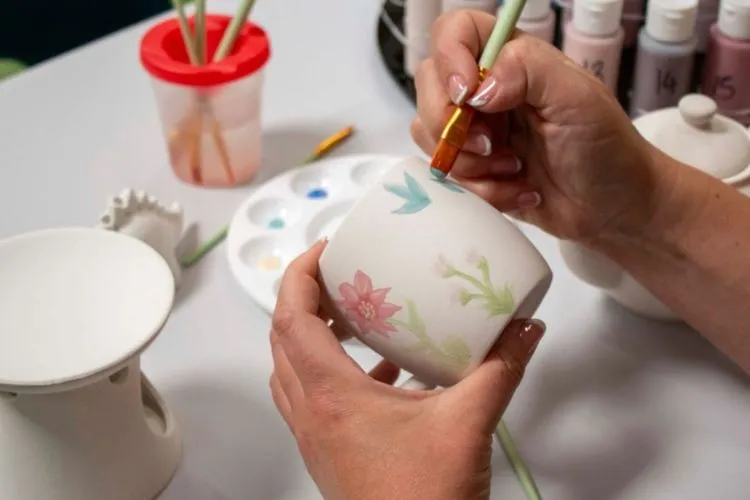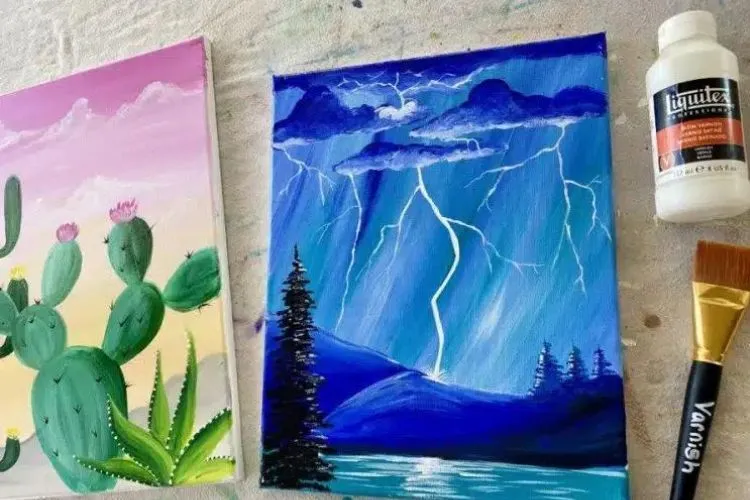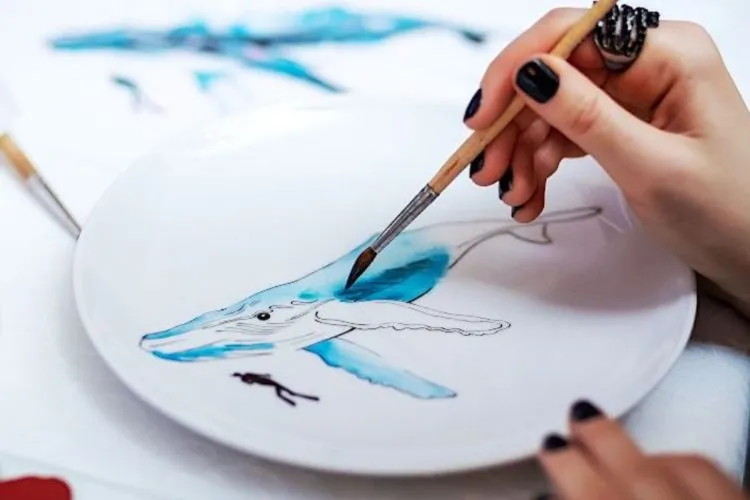Sealing acrylic paint is a crucial step for artists who want to ensure the longevity and protection of their artwork.
Acrylic paints are loved for their versatility and vibrant colors but can be vulnerable to dust, UV rays, and physical damage if left unsealed.
This guide will walk you through the process of how to seal acrylic paint, offering a closer look at the materials, methods, and tips for achieving a perfect finish.

Understanding Acrylic Paint
At its core, acrylic paint consists of pigments suspended in an acrylic polymer emulsion. What makes acrylics a favorite among artists is their fast drying time and ability to adhere to a wide range of surfaces.
However, the same properties that allow for such versatility also make acrylic paintings somewhat fragile if not properly protected. This is where sealing comes into play.
How to Seal Acrylic Paint?
Before sealing, it is vital to ensure that the acrylic paint is completely dry. Depending on the thickness of the paint, this could take anywhere from a day to several weeks.
Once dry, gently clean the surface of the artwork to remove any dust or debris. Choosing the right environment is equally important. Always work in a dust-free, well-ventilated area to avoid imperfections and health hazards from fumes.
Types of Sealants for Acrylic Paint
When it comes to sealants, artists have a few options: spray sealers, brush-on sealers, and varnishes. Each comes with its own set of pros and cons. Spray sealers are quick and easy to apply, making them convenient for large or textured surfaces.
Brush-on sealers provide more control over the application process, though they can leave brush strokes if not applied carefully.
Varnishes, whether glossy, satin, or matte, can enhance the color depth and texture of the painting but require a bit more skill to apply evenly.

How to Seal Acrylic Paint with a Spray Sealer
Using a spray sealer involves a few simple steps. First, shake the can well to ensure the contents are properly mixed. Hold the can approximately a foot away from the artwork and spray in a steady, back-and-forth motion.
Apply a light coat to avoid drips. It is crucial to wear a mask and work in a well-ventilated area when using spray sealers due to the harmful fumes. After applying, allow the sealant to dry completely before adding additional coats if necessary.
How to Seal Acrylic Paint with a Brush-on Sealer
Applying a brush-on sealer requires a clean, soft brush and a steady hand. Dip the brush lightly into the sealer, removing any excess before applying to the painting.
Use even, single-direction strokes to cover the surface. Avoid going over the same area multiple times to prevent brush strokes from showing. Let the first coat dry fully before applying subsequent coats.
How to Seal Acrylic Paint with Varnish
Varnish application begins with stirring the varnish gently to avoid creating bubbles. If necessary, thin the varnish according to the manufacturer’s instructions.
Apply the varnish in thin, even coats, using a clean brush. Between coats, allow the varnish to dry fully, which can take several hours to overnight depending on the product and environmental conditions.

Curing and Drying Time
Understanding the difference between drying and curing is essential. While a sealant might feel dry to the touch within hours, it may not fully cure for several days.
Curing is the process through which the sealant hardens and reaches its maximum durability. The time required can vary widely depending on the type of sealant, thickness of application, and ambient conditions such as temperature and humidity.
Pro Tips for a Perfect Finish
Achieving a flawless finish requires patience and precision. Always apply sealants in thin, even coats to prevent drips and uneven textures.
For best results, wait for the recommended drying time between coats, which can be found on the product’s label. Handling the artwork too soon can lead to fingerprints and smudges, so it’s wise to wait until the sealant has fully cured.
Common Mistakes to Avoid
One of the most common mistakes is applying the sealant too thickly. Thick coats can dry unevenly, leading to cloudiness or cracks.
Sealing in a humid or very cold environment can also harm the drying process, potentially causing the sealant to remain tacky. It is always recommended to do a spot test on a hidden area of the artwork to ensure compatibility and desired finish.
Maintenance of Sealed Acrylic Paintings

A sealed acrylic painting is easier to maintain than an unsealed one. Regular dusting with a soft, dry cloth is often all that’s needed.
For more stubborn spots, a slightly damp cloth can be used. Be gentle to avoid scratching or damaging the sealant layer.
You may also find useful: How To Revive Acrylic Paint? Easy Tutorial
Frequently Asked Questions (FAQs)
How long should I wait to seal my acrylic painting?
It’s best to wait until the paint is completely dry, which can take from one day to several weeks, depending on thickness.
Can I use hairspray to seal acrylic paint?
While hairspray can provide a temporary fix, it’s not recommended as a long-term solution due to its lack of durability and potential yellowing over time.
What’s the difference between varnish and a sealant?
Varnish often refers to a specific type of finish that can protect and enhance the artwork’s appearance, while sealant is a broader term that includes any protective coating.
Do I need to seal acrylic paint on canvas?
It is highly recommended to seal acrylic paint on canvas to protect against UV light, dust, and physical damage.
How can I tell if the sealant is dry?
Refer to the product’s instructions for the drying time. The surface should be dry to the touch and no longer tacky. Remember, drying is not the same as curing, which takes longer.
Conclusion:
Sealing acrylic paint is not merely an additional step; it is an essential part of the painting process that protects and enhances the artwork.
By choosing the right sealant, preparing the surface properly, and applying the product according to best practices, artists can ensure their creations stand the test of time.

Meet Isabella Anderson, your acrylic painting mentor with over a decade of brush-wielding mastery. Dive into the colorful world of acrylics with her expert guidance, featured exclusively on ‘Acrylic Authority.’ Unleash your inner artist and explore the limitless possibilities of this versatile medium alongside a true acrylic aficionado.
